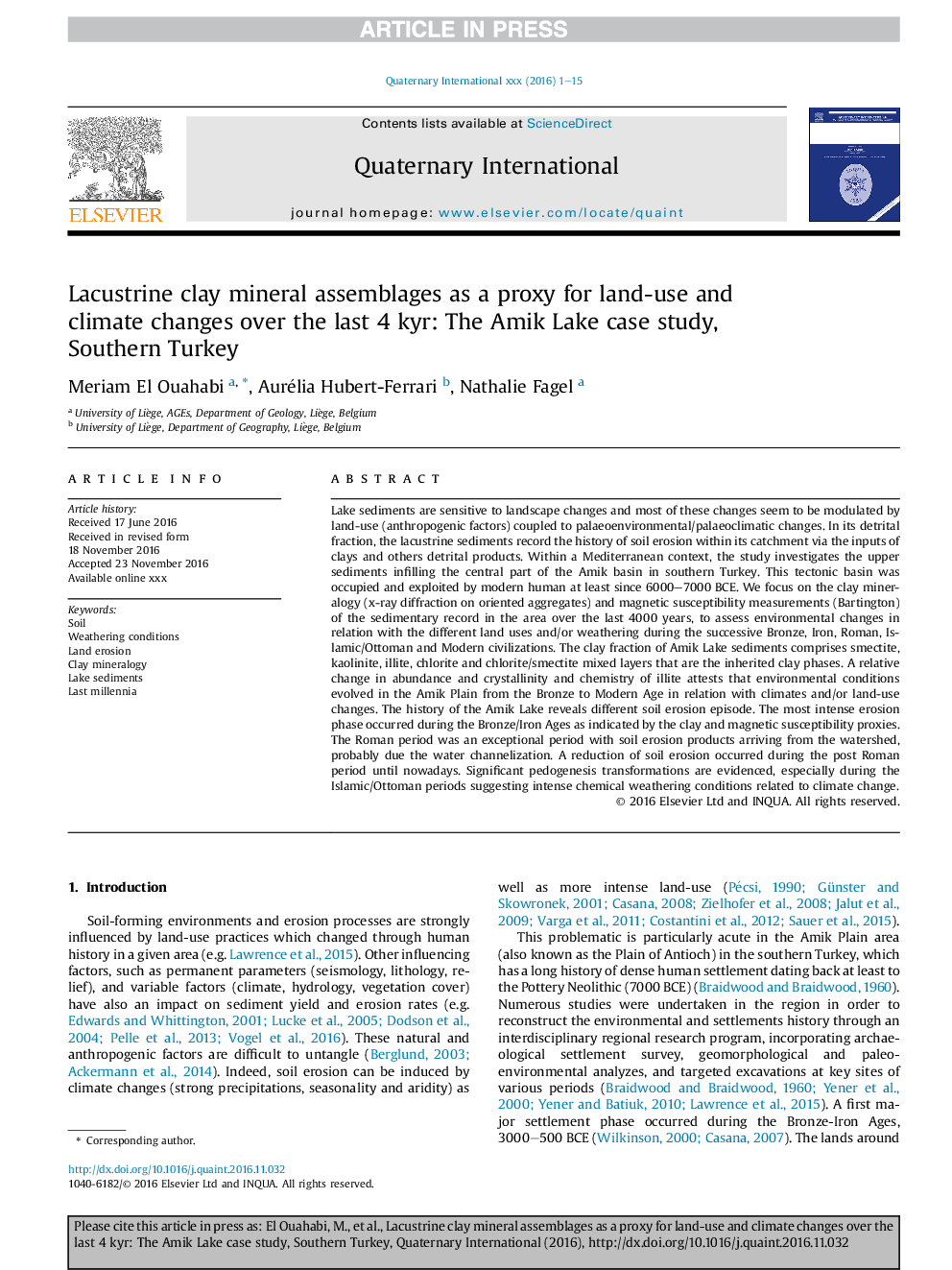| کد مقاله | کد نشریه | سال انتشار | مقاله انگلیسی | نسخه تمام متن |
|---|---|---|---|---|
| 5113325 | 1377926 | 2017 | 15 صفحه PDF | دانلود رایگان |
عنوان انگلیسی مقاله ISI
Lacustrine clay mineral assemblages as a proxy for land-use and climate changes over the last 4 kyr: The Amik Lake case study, Southern Turkey
دانلود مقاله + سفارش ترجمه
دانلود مقاله ISI انگلیسی
رایگان برای ایرانیان
کلمات کلیدی
موضوعات مرتبط
مهندسی و علوم پایه
علوم زمین و سیارات
زمین شناسی
پیش نمایش صفحه اول مقاله

چکیده انگلیسی
Lake sediments are sensitive to landscape changes and most of these changes seem to be modulated by land-use (anthropogenic factors) coupled to palaeoenvironmental/palaeoclimatic changes. In its detrital fraction, the lacustrine sediments record the history of soil erosion within its catchment via the inputs of clays and others detrital products. Within a Mediterranean context, the study investigates the upper sediments infilling the central part of the Amik basin in southern Turkey. This tectonic basin was occupied and exploited by modern human at least since 6000-7000 BCE. We focus on the clay mineralogy (x-ray diffraction on oriented aggregates) and magnetic susceptibility measurements (Bartington) of the sedimentary record in the area over the last 4000 years, to assess environmental changes in relation with the different land uses and/or weathering during the successive Bronze, Iron, Roman, Islamic/Ottoman and Modern civilizations. The clay fraction of Amik Lake sediments comprises smectite, kaolinite, illite, chlorite and chlorite/smectite mixed layers that are the inherited clay phases. A relative change in abundance and crystallinity and chemistry of illite attests that environmental conditions evolved in the Amik Plain from the Bronze to Modern Age in relation with climates and/or land-use changes. The history of the Amik Lake reveals different soil erosion episode. The most intense erosion phase occurred during the Bronze/Iron Ages as indicated by the clay and magnetic susceptibility proxies. The Roman period was an exceptional period with soil erosion products arriving from the watershed, probably due the water channelization. A reduction of soil erosion occurred during the post Roman period until nowadays. Significant pedogenesis transformations are evidenced, especially during the Islamic/Ottoman periods suggesting intense chemical weathering conditions related to climate change.
ناشر
Database: Elsevier - ScienceDirect (ساینس دایرکت)
Journal: Quaternary International - Volume 438, Part B, 18 May 2017, Pages 15-29
Journal: Quaternary International - Volume 438, Part B, 18 May 2017, Pages 15-29
نویسندگان
Meriam El Ouahabi, Aurélia Hubert-Ferrari, Nathalie Fagel,